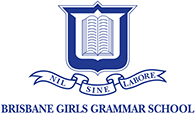Mr Donald Pincott, Head of Visual Art
The study of art at our school has a long and distinguished history. Evidence for this in the form of a timetable from 1899 resides in the Brisbane Girls Grammar School archives. Close perusal of this handwritten marvel reveals that at Girls Grammar, girls in each form were exposed to art, studying drawing at least once a week as part of their set curriculum. At the same time as the girls were following this schedule, in fin de siècle Europe, art nouveau was first flowering; Van Gogh, Georges Seurat, and Aubrey Beardsley had only recently died; and Toulouse Lautrec was in an infirmary. In Australia, the plein air painters were celebrating the bush and capturing the antipodean light.
Mrs O’Connor, the first Principal, was herself an artist, and was determined that art should be part of the curriculum. Unsurprisingly, the teaching of art at the School in 1899 reflected the wider approach to art education in the Western tradition at that time. Copying from plaster casts and instruction in water-colour painting were considered the correct approach in a girls school. Masters encouraged the girls’ skills in observation and their ability to manipulate drawing materials. Drawing was also considered a means of developing hand-eye co-ordination.
As time passed, school art curricula followed changing pedagogical fashions. By the middle of the twentieth century, schooling reflected the then radical approach of the American educator, John Dewey who promoted the need for discovery in learning and the cultivation of imagination and individuality. Art was seen as a vehicle for developing such creativity. By the 1970s, Visual Art in Queensland schools was a respected accredited academic subject counting towards university entrance. Copying works by artists (or indeed the Art teacher) was deemed uncreative, and gave way to the study of art as a means of expressing individual ideas and exploring materials. The teacher was guide and facilitator.
In our era, again unsurprisingly, the art curriculum echoes the practices of contemporary art, including digital media and processes as well as traditional approaches. Contemporary artists represent the world visually, but also create images which aim to educate, challenge and ‘conscientise’ the viewer. The biggest difference I see in art education today is the pedagogical emphasis on thinking and exploring ideas as well as the ability to manipulate materials and to show expert technique. This means that, although an art room may physically look similar to the one in our 1899 timetable, with sinks, desks, pencils and drying racks, what actually transpires in the classroom is quite different.
Students of art develop twenty-first century skills that not only build upon core content knowledge, but also include information and communication skills, thinking and problem solving skills, interpersonal and self-directional skills, and the skills to utilize 21st century tools, such as information and communication technologies (Pearlman, 2010).
To inculcate these skills for the current and coming world, teaching strategies necessarily reflect what Pearlman calls a ‘move away from teacher-directed whole group instruction to create learner-centered workplaces for a collaborative culture of students at work’.
So what does this edu-speak actually mean for art education at this School? The art teacher is no longer just an expert demonstrator, but an active collaborator who explores ideas with the students, and whose job is to encourage deep thinking skills which apply well beyond and outside the subject of Visual Art. Because art is more than the creation of visual images, objects and experiences, Visual Art teachers must expose students not only to a wide variety of art works and artists, but to the philosophical underpinnings of the discipline as well.
What sits at the core of this way of doing art is conferencing. More than just a chat or a checkpoint, a conference is the teacher talking to students to empower them to think deeply about ‘how’ they do their work as well as the ‘doing’ of their work. According to Erica McWilliam, teachers are no longer the ‘sage on the stage’ or the ‘guide on the side’, but ‘meddlers in the middle’ (McWilliam & Taylor, 2015) who collaborate with their students and enable them to collaborate with one another.
The key to building this ‘collaborative culture’ is conferencing; questioning each girl to enable deep thinking and modelling skills and processes to express ideas. The contemporary art teacher is the meddler in the middle of a student’s work, challenging her to think and to see the work from new angles. This, of course, is nothing new. Socrates’ questioning technique and the philosophical inquiry method have always encouraged teachers to use open-ended questioning in order to encourage students to think for themselves and to arrive at their own solutions to problems.
The days of students copying from plaster casts and teachers demonstrating water-colour skills at the front of the room have passed, and modern art teaching reflects the twenty-first century world that awaits our students. An art classroom today equips the girls not only to ‘do’ and produce art, but to think artfully, strategically, and imaginatively.
References
Drapeau, P. (2014). Sparking student creativity. Alexandria, USA: ASCD.
Mac Aulay, B. (1998). Educating through art. Unpublished manuscript.
McWilliam, E. & Taylor, P. (2015, February 13). Expanding our teaching repertoire: why is it so important and so bloody difficult? [Web log post]. Retrieved from http://www.ericamcwilliam.com.au/expanding-our-teaching-repertoire-why-is-it-so-important-and-so-bloody-difficult/
Pearlman, B. (2010). Designing new learning environments to support 21st century skills. In J. Bellanca & R. Brandt (Eds.),.21st century skills: Rethinking how students learn. (pp. 101–128)]. Bloomington, USA: Solution Tree Press.
